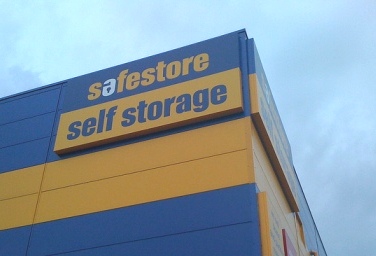Safestore self storage announces ‘strong performance across the group’

Safestore self storage announced a series of impressive gains in its recently-published results for the year ending on the 31st October 2010.
Despite the challenging trading conditions, they appear to have increased occupancy and continued to profit impressively from their existing customers, through a tiered programme of strategic price increases.
Safestore self storage: the big picture
The most headline-grabbing statistics in this set of results were that they have managed to achieve a 5.7% annual increase in revenue, which rose to £89.2 million, and they managed to turn a £9.4 million loss before tax the year before into a profit of £29.2 million.
This was obviously good news for the company’s investors as it meant that Adjusted Earnings Per Share rose to 8.19 pence, an 8.9% increase from the 7.52 pence per share recorded in 2009. This enabled Safestore to make a final dividend of 3.25 pence, up from 3 pence the year before.
While such gains are great in the short term, a self storage company’s success is ultimately built on bricks and mortar. This was why it was also very encouraging to see that their overall property portfolio increased in value to £687.2 million, a 6.1% increase on October 2009.
Self storage occupancy and rent the keys to growth
These headline figures are very impressive, but what really matters is the intricate price-structuring going on underneath them. Over the long term, success for a self storage business is really decided by two factors: how much self storage space they can sell, and how much they can charge people for it.
These two aims do not always align perfectly, as obviously a higher price may act as a disincentive for people to store with a particular company. That’s why self storage companies often reduce their prices in stores with a lot of vacancies to drive occupancy up, and steadily increase prices for existing self storage customers once they’ve become settled in.
This is helped by the peculiar inertia of self storage customers; many seem to forget they’re paying rental fees once they’ve moved in and ignore their unit for a long time, keeping their goods in self storage for much longer than originally planned, and not keeping tabs on what the charges are.
Safestore: increasing self storage rents
Safestore have developed a clever strategy for increasing rates; while their broad aim is to put them up year on year, they allow for considerable flexibility. All their stores have been grouped into different categories, each of which has very distinct average rental rates.
Safestore’s 118 total stores have been categorized as ‘Developing’ (8), ‘Established’ (18), ‘Mature’ (84) and ‘Large’ (8). A typical store in any of the first three categories has about 36,000 lettable square feet of space, while a ‘Large’ store has around 80,000.
This is based on the orthodoxy that a self storage facility will nearly always fill up quite gradually after it opens, not nearing capacity until around three years of operation. This seems to be borne out by the report, as stores in the ‘developing’ category are on average 30% occupied, while ones in the ‘mature’ category are 67% occupied. The report says Safestore self storage as a whole is 61% occupied: 2.9 million of 4.8 million square feet are currently let.
The cost structure operates so that an average square foot of space in a ‘Developing’ store costs £19.75 to rent per year, which is relatively cheap, while one in a ‘Mature’ store is £27.42 ‒ one of the highest prices for self storage anywhere in the UK. This leads to a big difference in cost for the consumer, as it means 100 square feet in a ‘Developing’ store would be around £1,975 per annum, while its equivalent in a ‘Mature’ store would could cost £2,742.
Obviously, the company strategy is to promote each new store it opens so that it can advance quickly through this occupancy cycle, and become full enough for them to charge the higher rates. As most of the other multi-site self storage companies probably employ a similar policy, it provides an interesting insight into how the self storage business structures its prices.
Overall, this report indicates two things. First, such a strategy has been highly successful, as 77% of Safestore’s income came from ‘Mature’ stores in 2010, contributing to the increase in profits. Second, for customers, it is very likely to be in their interest to choose a recently opened self storage centre over one that has been there a long time.
Leave a Reply
Subscribe to This Blog
Get new blog posts sent to you by subscribing to RSS updates or to email updates.






